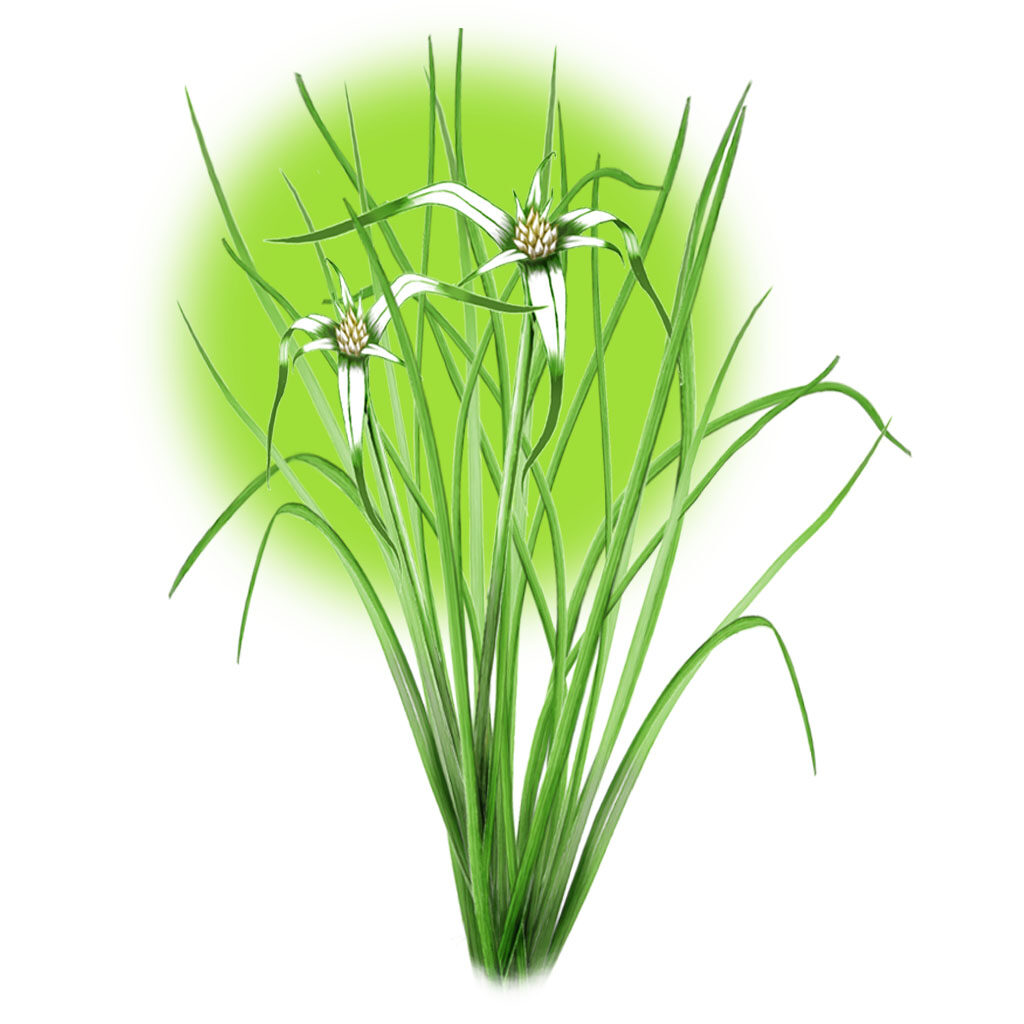Star Sedge

Also called Narrowleaf Whitetop Sedge, Starrush Whitetop, and Whitetop Sedge, this lovely little evergreen grass-like native is found in moist places, in many kinds of soils (except not acid soil), and even sometimes in shallow water. Watch for Star Sedge along shores, streams and lakes, in marshes, roadside ditches, or other damp spots. There are other species of similar sedges, but this one is quite distinctive with its narrow leaves and white bracts.
What appear to be daisy-like flowers, aren’t flowers at all, but sets of leaf-like blades which are white right next to center of the “flower” but turn green further out toward their sharp drooping tips. Long, straplike leaves emerge from the plant’s base in a clump, and grow 6”-12” high. The actual bloom is at the center, a cluster of little nutlets, each with a tiny flower. Most sedges are wind-pollinated, but the Star Sedge is fragrant and pollinated by bees, which are attracted to the showy white bracts and leave with pollen instead of nectar.
You can tell that the Star Sedge is not a grass by rolling the stem between your fingers – it’s not round, but three-sided. Here’s a little botanists’ ditty to help you remember: “Grasses are flat, rushes are round, sedges have edges.”
This pretty little plant is native to Belize, and can be found as far north as the southern US, as far south as French Guiana in South America, and is also found on the Caribbean Islands. This plant is a perennial, and will thrive in landscaping and along walks if it gets a bit of water. To propagate it, divide the clump when it becomes large and plant the smaller clumps of rhizomes around. Star Sedge will thrive in full sun or partial shade and will spread slowly to fill a bed. Find more info here.